The popularity of aero road helmets has exploded in triathlon, sending the long-tailed TT helmet towards the margins as savvy triathletes have realised that aerodynamics, comfort and ventilation could come in one helmet package.
You'll still see both on the race track, of course, so read on for our reviews of a range of top aero road helmets and TT-style helmets.
On this page, you'll also find our guide to what an aero road helmet actually is, and an overview of how we tested (in and out of the wind tunnel).
Plus, if you're looking for more aero gains, take a look at our list of the best clip-on aerobars.
Best aero helmets for triathlon
Limar Air Speed
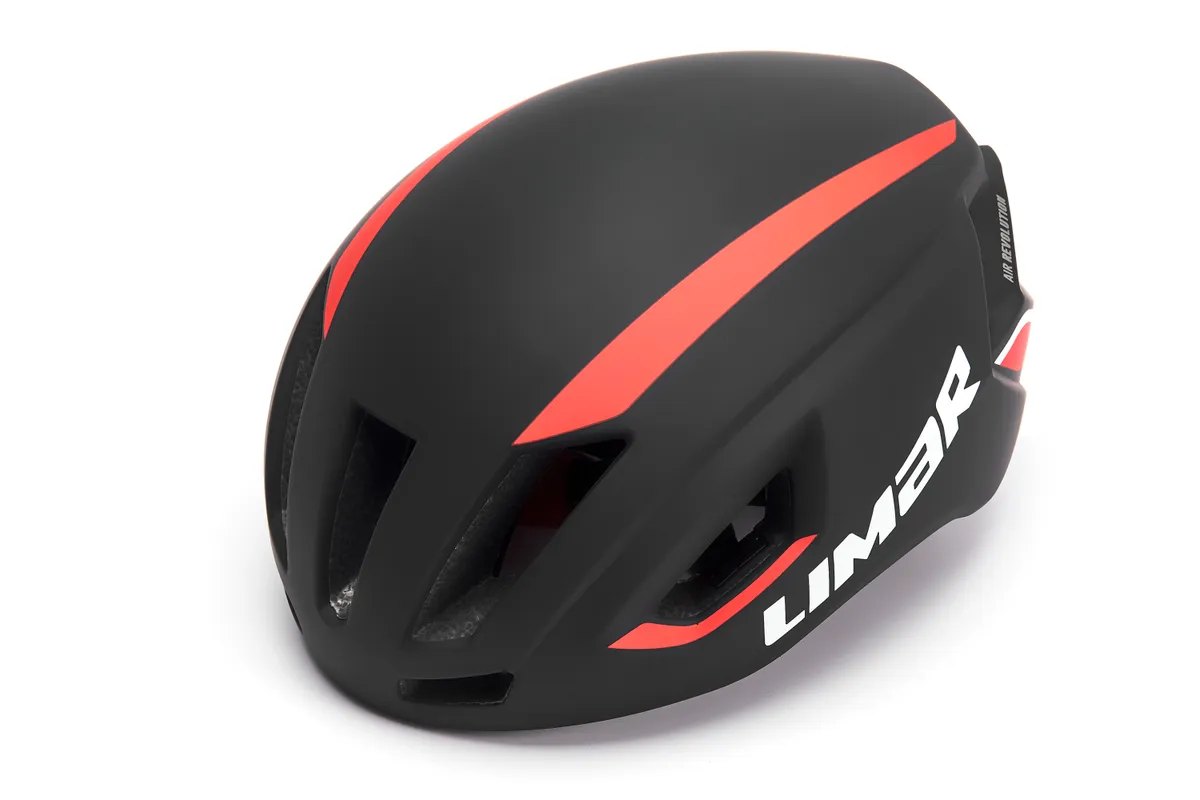
- Price: £183
- Pros: Very quick helmet, magnetic buckle a bonus
- Cons: Lack of MIPS, doesn't exactly excel for ventilation
Limar has made a concerted effort to move into the triathlon market in the last couple of years, attracting British ITU racers into the fold and adding a magnetic buckle on the chinstrap for added transition appeal for cold, post-swim fingers.
Limar’s own positive tunnel testing has only extended to athletes riding on the hoods.
Our tri-bar Boardman tunnel analysis, however, confirms that this is one swift lid, regularly coming second behind the S-Works Evade II or Giro Vanquish MIPS (especially at the key 45km/h speed and 0° yaw angle).
In terms of safety, there’s no MIPS protection (you can now choose a model with it included, though) but the retention system is secure, while venting from the 12 channels on hilly, sticky days is acceptable. Weight is a decent-enough 259g.
Verdict: Plenty of tri appeal and success in the wind tunnel, too.
Score: 90%
S-Works Evade II
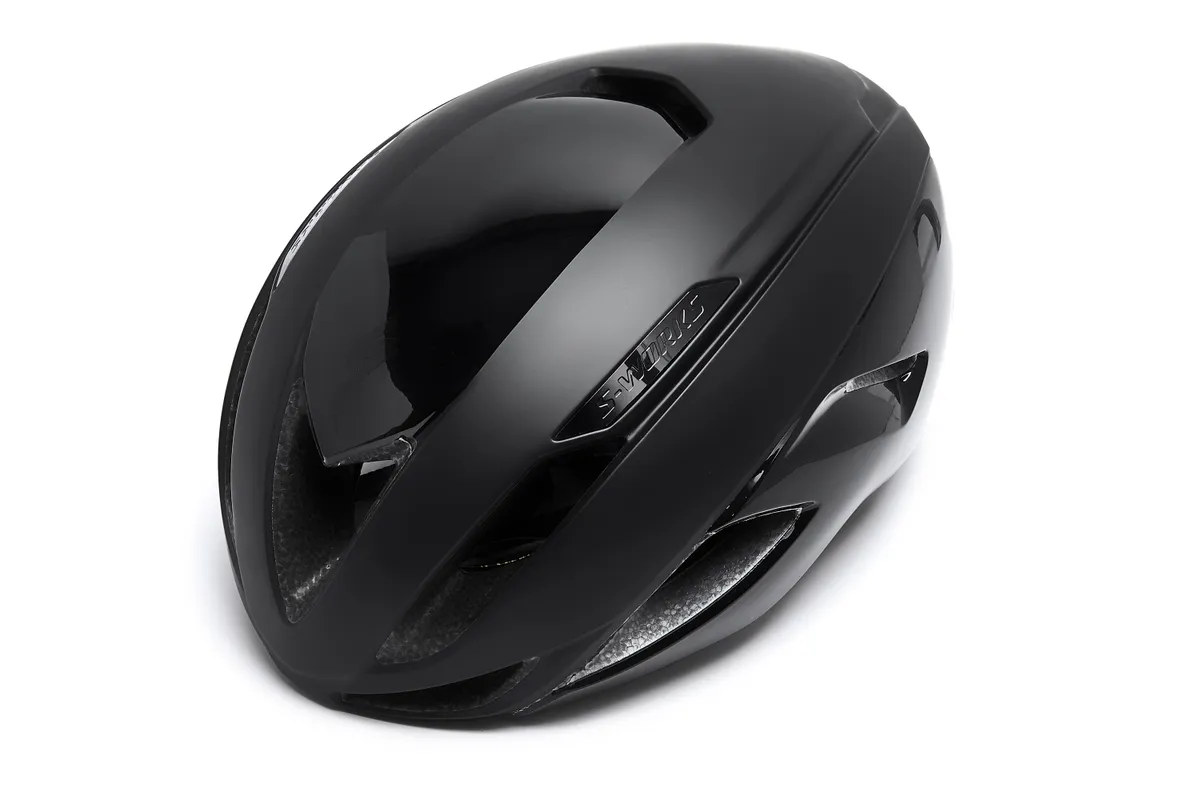
- Price: £200
- Pros: Impressive aerodynamics, handy magnetic buckle, MIPS
- Cons: Would like more adjustment on side straps
Specialized has spent plenty of time in its own Californian wind tunnel with the Evade II and our own Boardman tunnel results reaffirm this aerodynamic development.
The Evade was the fastest overall on test in our Boardman tunnel sessions, especially at the speed of 45km/h, but impressive across a range of yaw angles.
The 12 deep, internal air channels are an improvement over the original (as is the new addition of the MIPS safety system) for warmer high-intensity riding, and the magnetic buckle is great for transition speed and numb finger use.
Weight with the MIPS safety system is still a lean 262g but I'd prefer more adjustment with the side straps, which are oddly fixed in place.
The Evade II has recently been superseded by the Evade III, but you may still find the older model floating around at retailers.
Verdict: Light, lean and proven gains in the wind tunnel.
Score: 93%
Giro Vanquish MIPS
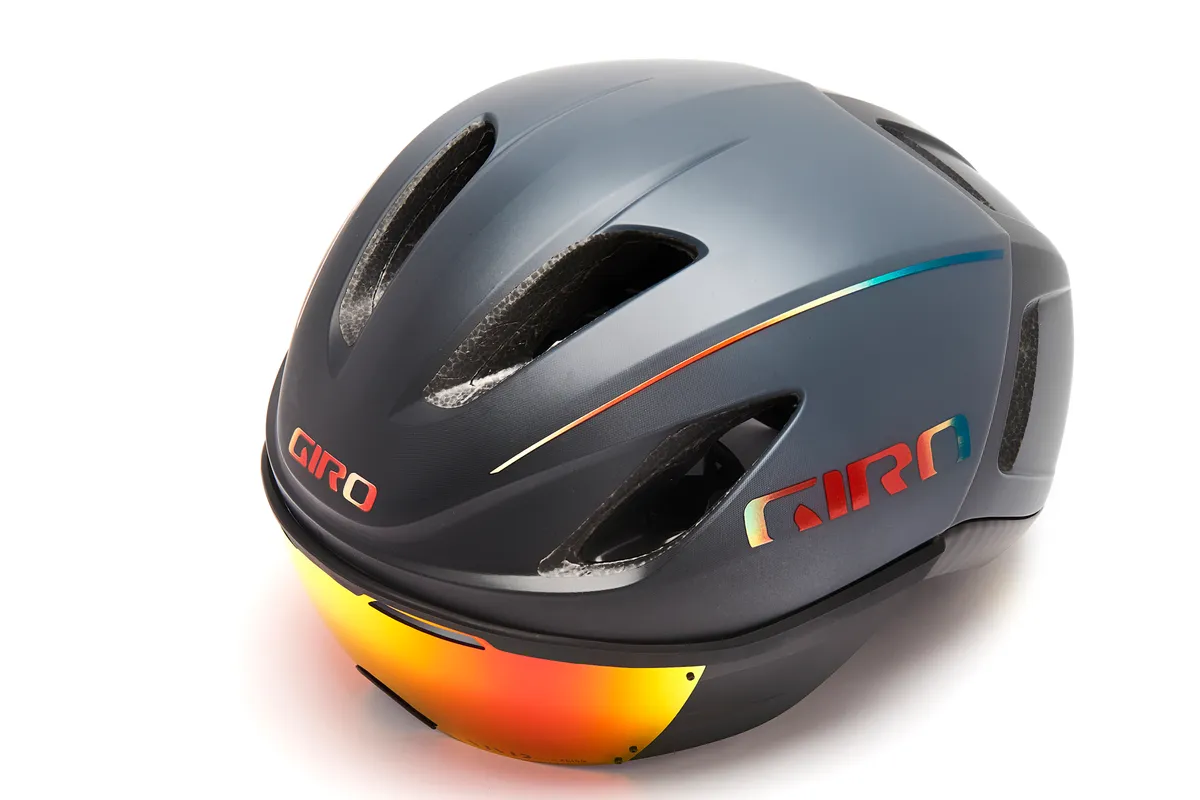
- Price: £249.99 / $300
- Pros: Well ventilated, comfortable, quick, MIPS
- Cons: Not the lightest, expensive, gap between visor and helmet
The Vanquish MIPS is unique among the competition here as it comes with a magnetic Shield Visor.
The visor provides good clarity but there’s a clear gap between that and the face, giving me concerns about detritus flicking up.
That's a shame, as the helmet offers sound ventilation via its 10 well-placed vents, there’s MIPS (Multidirectional Impact Protection System) and comfort from the Roc Loc system (the buckle is fiddly, however).
Our Boardman wind tunnel results saw it regularly come behind only the S-Works Evade II.
It excelled at 0° yaw angle and 35km/h speed, but was even better in an aggressive aero position.
Despite the 355g figure, it doesn’t feel like a weighty lid when riding. It does have a very high RRP, however.
Verdict: Swift and comfy, but costly and we’re not set on the visor.
Score: 84%
Van Rysel Racer
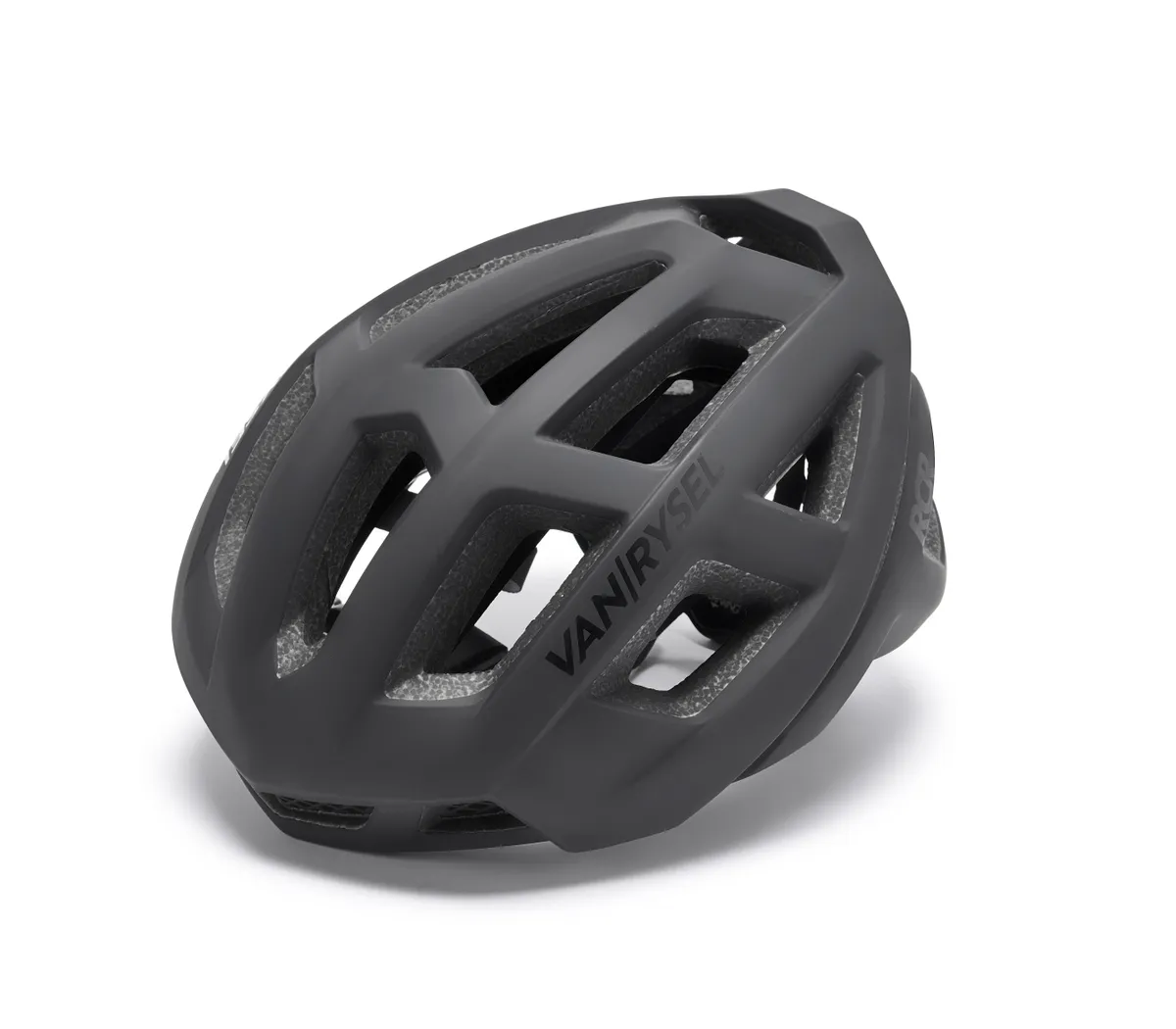
- Price: £39.99 / $89.99
- Pros: Impressive ventilation, incredible value
- Cons: Retention system isn't the greatest, poor aerodynamics at 0° yaw angle
Largely blown your triathlon budget on a race spot and flights to Ironman Lanzarote?
Then you could do far worse than picking this forty quid Decathlon creation as your lid of choice, given it offers fine ventilation and superior aerodynamics in crosswinds.
While it performed poorly at 0° yaw angle (i.e. into direct headwinds), the wider the wind angle, the better the Racer performed.
Our recorded segments even showed it beating the S-Works at 20° yaw angle when riding at 45km/h.
The ventilation is amongst the best on test here yet it loses marks due to the firm front padding, a tricky to adjust retention system and straps that have a tendency to loosen.
I also prefer the other four available colours.
Verdict: Fine venting, aero gains in winds, disappointing straps.
Score: 88%
Kask Utopia
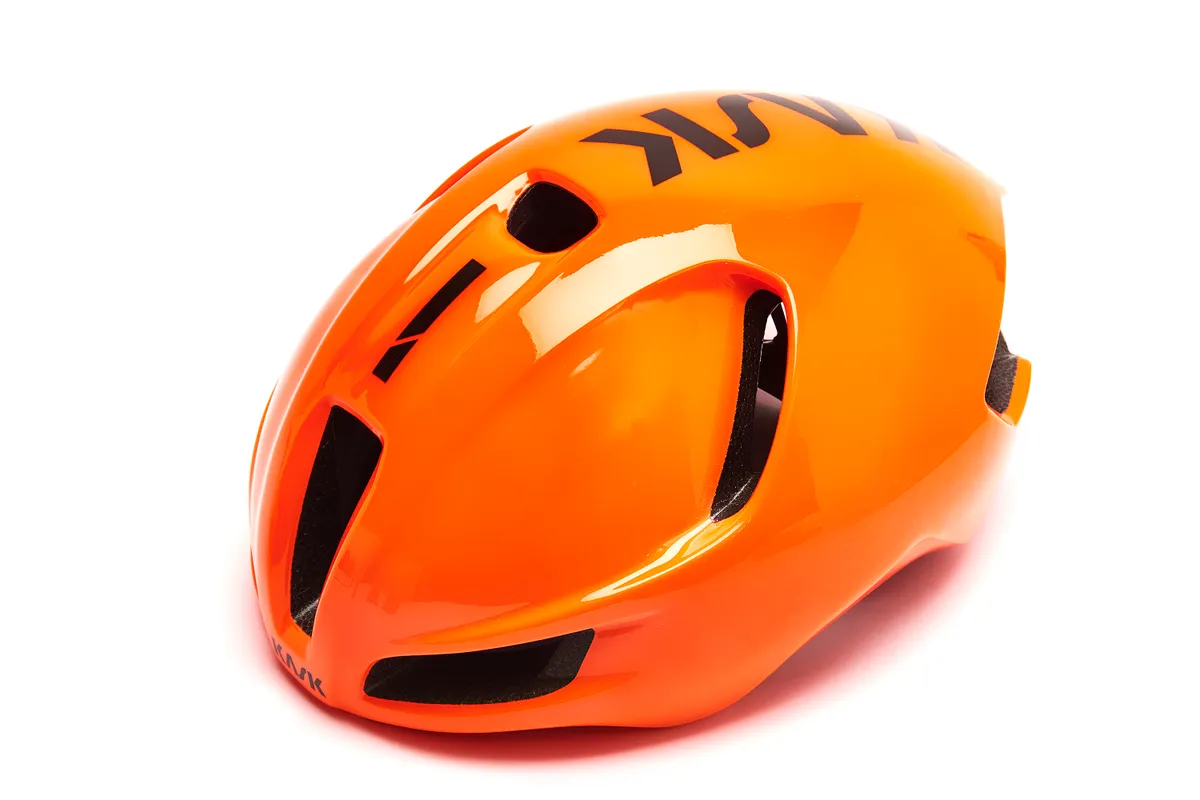
- Price: £245 / $300
- Pros: Comfortable, aerodynamic, great ratchet system
- Cons: Price, not the most ventilated
At the time of writing, the Utopia is the helmet of Team Ineos and the official helmet of Ironman Europe, the former suggesting exhaustive R&D, the latter a huge marketing pot.
And it’s the R&D we’re interested in here, with the Utopia reaching the promised land in our 2020 Silverstone Sports Engineering Hub tests – beating both Smith (easily) and Spiuk (much closer) at every speed and yaw angle.
Onto the asphalt and I'm a sucker for Kask’s leather chinstraps, while the multi-directional ratchet system and thick internal padding aid both fit and comfort.
Ventilation via the nine vents is only satisfactory and I'd like a horizontal pad across the forehead to prevent sweat streaming down. Weight is a lean 235g.
Verdict: Swift and sleek, just short of our own helmet utopia.
Score: 90%
Smith Trace MIPS

- Price: £219.99 / $260
- Pros: Great safety features, plump padding
- Cons: Slightly hot in summer, not the most aerodynamic
Of all the helmets on test here, the Trace is the most confidence-inducing when it comes to safety.
That’s due to both the MIPS and Koroyd beehive core, also seen on helmets from Endura and, to a greater extent, the custom 3D-printed offerings from Hexr.
It’s the helmet that I've got the most usability out of, joining me on both trail rides and road slogs.
It’s durable, the ratchet is efficient and the internal pads are plump.
Anecdotally, I found midsummer ventilation compromised by the beehives.
Plus, despite Smith’s claims of aero dominance from testing in 2018, it was consistently out-performed by both the Kask and Spiuk in our late 2020 Silverstone wind tunnel tests at every speed and yaw angle.
Verdict: Versatile, safe and pricey, and outdone in the tunnel.
Score: 72%
Spiuk Profit Aero
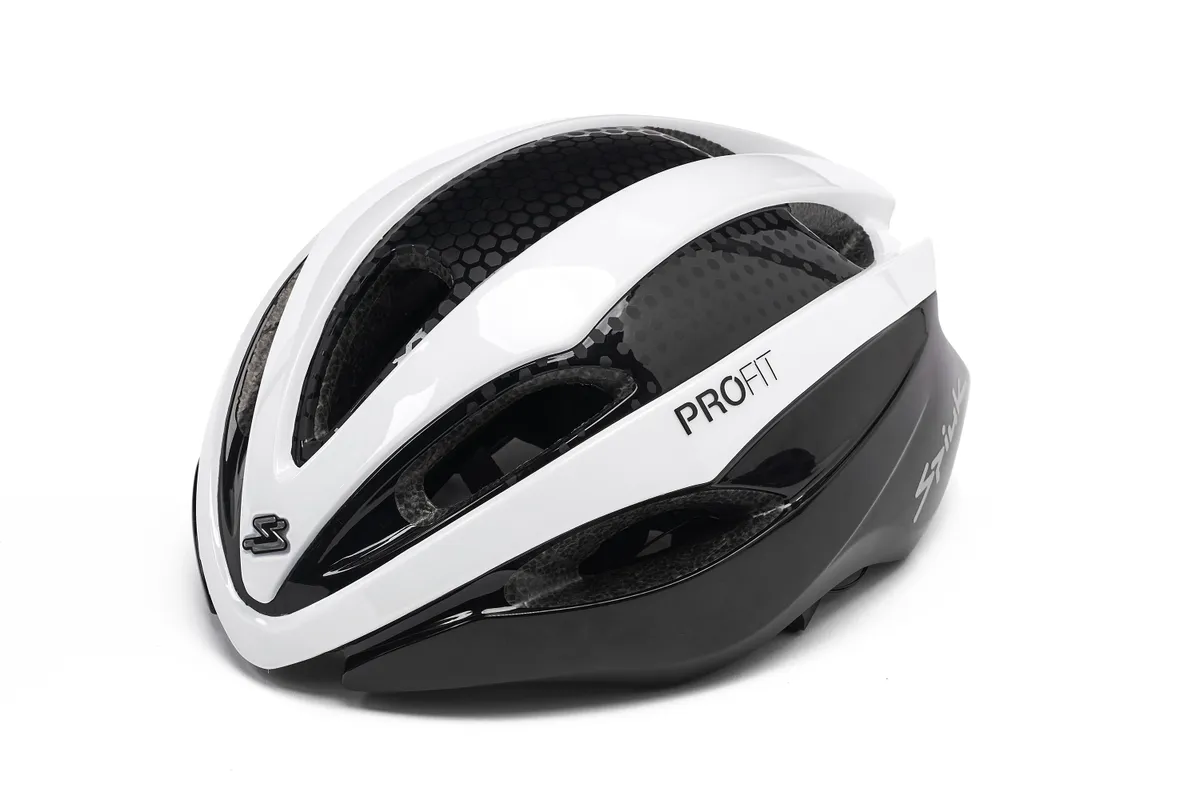
- Price: €129
- Pros: Tri-friendly features, decent aero performance
- Cons: Only two sizes available
Given the brand made my first-ever tri-suit, I'll always have a place in our tri heart for Spiuk.
If its UK triathlon exposure has reduced since 2008, the Profit Aero comes with the backing of ITU World Champ Mario Mola and with plenty of multisport flourishes.
These include a magnetic buckle and Boa retention dial for T1 speed, while the brand’s aero focus has produced a helmet that delivers in the wind tunnel, coming only marginally behind the twice-the-price Kask (especially at 0° yaw angle).
The nine vents are effective enough, but the limp padding and frustratingly fiddly straps show where some cost compromises have been made.
Only two available sizes also limit the chances of perfecting your fit.
Verdict: Good price, great shell, less impressive strap.
Score: 83%
Kask Wasabi

- Price: £269 / $350
- Pros: Great ventilation, decent retention system
- Cons: Expensive, a little warm in the height of summer
The USP of the Wasabi is its billing as a year-round helmet, with an easily adjustable vent allowing riders to block or open the forward-facing channels, while a dense Merino wool lining adds warmth and wicking properties.
This ticks the winter boxes but, for summer, there are better ventilated options out there (and, admittedly, a £15 Merino skull cap is a far cheaper alternative in winter), even if the closed vents enhance the aero profile.
Elsewhere, it’s classic Kask, with a luxurious leather chinstrap, the outer shell slickly covering any exposed EPS foam, and a hugely effective retention system.
MIPS is eschewed in favour of Kask’s WG11 system, weight is an acceptable 272g, but that price tag and winter focus just make this too niche.
We're also yet to put the Wasabi to the test in the wind tunnel.
Verdict: Neat ventilation concept, but there are better tri-season picks.
Score: 72%
Abus GameChanger

- Price: £189.99
- Pros: Feels fast on the road, reasonable weight
- Cons: Not the most comfortable
The GameChanger is about as aggressive as an aero road helmet gets and has been around since 2017, but will the lid age better than its name? It’s always been divisive and that still stands in 2023.
The good is its extreme aero road focus, with rear thermal ports and a similar build to S-Works’ long-standing Evade series, which 220 wind-tunnel tests have proven to be best in class.
The 263g weight is decent enough for a lid with limited ventilation channels, while the ventilation is also satisfactory for something so speed focussed.
And, while it’s a cliché to rival the term game changer, it’s a helmet that does feel fast on the roads (though we’ve never tested it in the tunnel to validate this).
But it’s under the lid where the GameChanger really struggles, with minimal padding, a bare polystyrene interior and an ultra slim fit that saw wedges of exposed EVA foam digging into our skull.
The ratchet system and straps also feel pretty basic for the £190 outlay, meaning it’s high time Abus delivered a sequel, which the brand has, so watch this space for a review.
Verdict: A clear aero focus, but there are far more comfortable lids around.
Score: 64%
Rudy Project Nytron
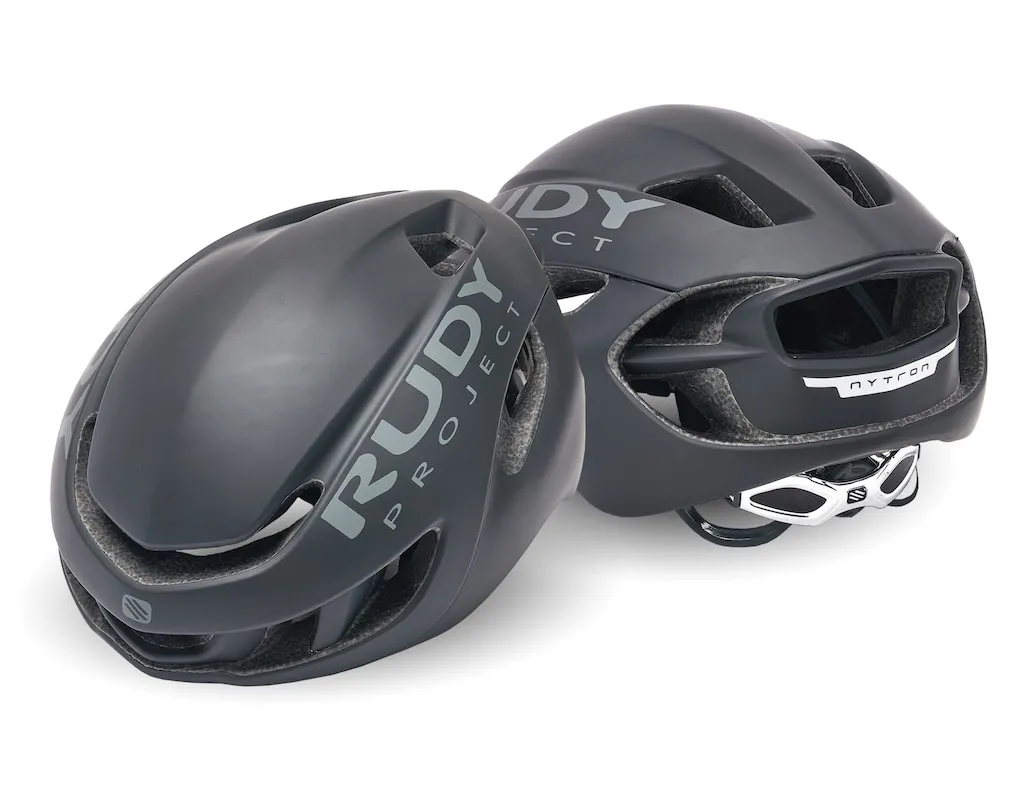
- Price: £189.99 / $324.99
- Pros: Versatile, good ventilation, reasonable value
- Cons: Ratchet system not the most durable
Swiss Side are one of the most celebrated aero experts in cycling, and the Nytron here is a collaboration with their no-stone-unturned tech team and Rudy Project, themselves no lightweight in the aero arena.
The wind-tunnel development is evident in the aero tail and 15 stealthy exhaust ports (though, we haven't yet got this helmet into the wind tunnel ourselves), the latter making this one of the most vented and versatile lids here for a variety of tri situations.
It’s one of the cheapest aero helmets around, but is still expensive, which makes the cheap plastic casing on the ratchet system an unwelcome surprise that’s already showing signs of wear.
The padding, straps and retention system are all unflashy but functional.
MIPS is missing, but there’s Rudy Project’s WG11 rotational impact system. Weight is a decent 268g.
Verdict: Slick, stealthy, vented and versatile; shame about the rear.
Score: 84%
Giro Eclipse Spherical
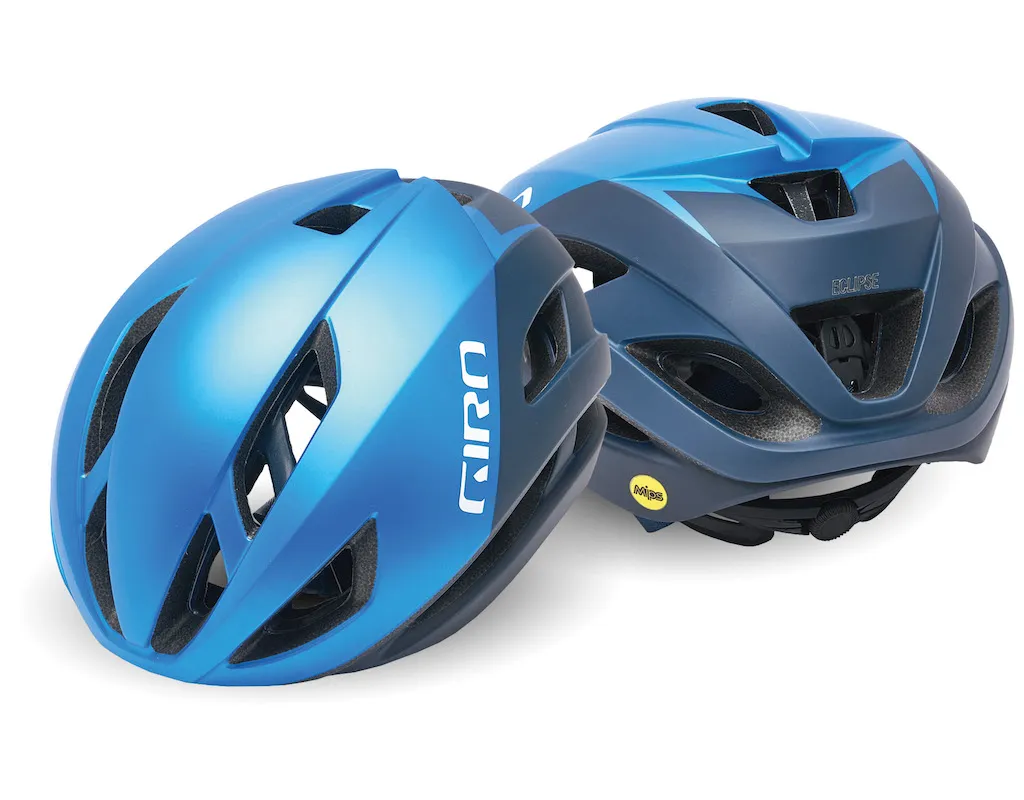
- Price: £239.99 / $250
- Pros: Good retention system, plush padding, impressive ventilation
- Cons: Not the lightest
Giro launched the aero road helmet movement in 2012 with the Air Attack, so any launch from the brand demands attention. So it is with the new Eclipse Spherical.
The Roc Loc 5 Air system’s internal fitting mechanism and slick retention dial swiftly secures an optimum fit, while the plush yet lean Ionic padding sits in the perfect place on the forehead for comfort and sweat mopping.
The Eclipse boasts 17 ventilation channels and breathability felt good.
The Spherical tech may be the most effective integration of MIPS I've seen and the outer shell is smoothly integrated into the EPS core to complete a classy look.
The 277g weight’s decent enough, but that’s all that’s mid-table about this low-profile, tech-laden helmet.
Verdict: A new entry into the Premier League of aero helmets.
Score: 91%
Abus GameChanger Tri
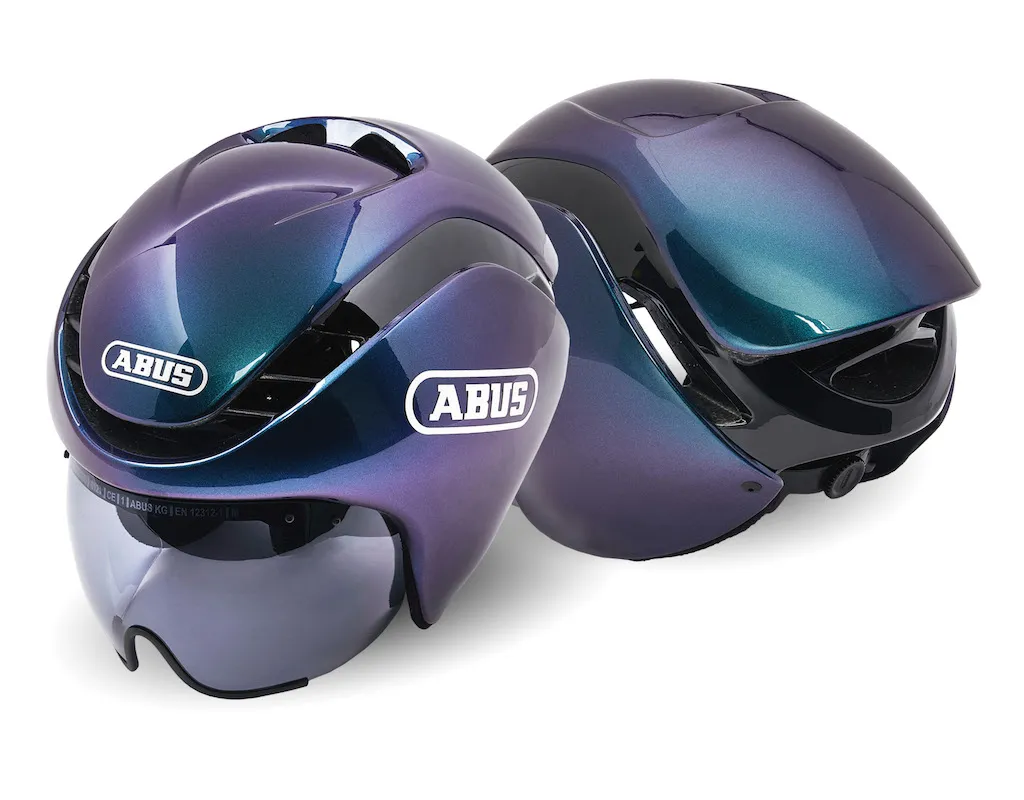
- Price: £399 / $599
- Pros: Impressive visor clarity, streamlined, decent ventilation for this type of helmet
- Cons: Weighty, pricey, doesn't suit all head shapes
The Gamechanger Tri lives up to its boastful title – here is a lid that looks like few others, with a vast ventilation channel on the top adding a Star Wars vibe.
The design wraps itself around the face in a streamlined manner to produce an exhilarating ride feel, with the straps also sitting flush to minimise drag.
The magnetic visor is easy to install and remove, but lacks the function to magnetically stow upside down like the Endura and Oakley.
Clarity is excellent, as is fog prevention, although the shell extending over the ears does add weight (362g with visor, 324g without).
Those with round heads can struggle with Abus’ standard GameChanger (reviewed above), but this version feels wider and comfier, even if taking it off swiftly in T2 is slow and a little painful.
Verdict: Pricey yet swift and relatively vented for such an aero helmet.
Score: 83%
Kask Bambino Pro

- Price: £285 / $420
- Pros: More aero than road-style helmets, comfortable, slick chinstrap
- Cons: Minimal ventilation
One of the things you instantly notice when putting on the 340g Bambino Pro is how the ear coverings numb the senses, especially in regard to traffic noise if you’re racing on open roads.
Yet there’s a welcome level of internal comfort that’s lacking in the Abus thanks to its dense 5mm padding, while Kask’s faux leather chinstrap always impresses.
The lack of a full-length tail adds versatility and less of an aero penalty if you move your head, with Kask promoting how the Bambino Pro, ridden by the INEOS Grenadiers WorldTour team, is aerodynamic in a variety of head positions (though we've yet to conduct our own wind tunnel tests on this model).
A choice of visors offering unrestricted vision are available, with my clear set staying mist-free on some sweaty hill sets in early summer.
The magnetic clips mean flipping it upside down is easy but doing so blocks the exhaust ports. And ventilation is where this Kask, like all TT lids, suffers when compared to vented road helmets.
You’ll need to ask yourself if the extra time saved by going for a TT over aero road lid (our tunnel tests suggest a saving between two and six minutes over 180km) are worth the danger of overheating.
If you go down the TT route, then this lid ticks the speed and internal comfort boxes. Just remember to practise putting it on/off at speed before race day (removing the visor helps).
Verdict: One of the more comfortable TT lids around, but consider your ventilation needs before buying.
Score: 82%
Endura D2Z Aeroswitch
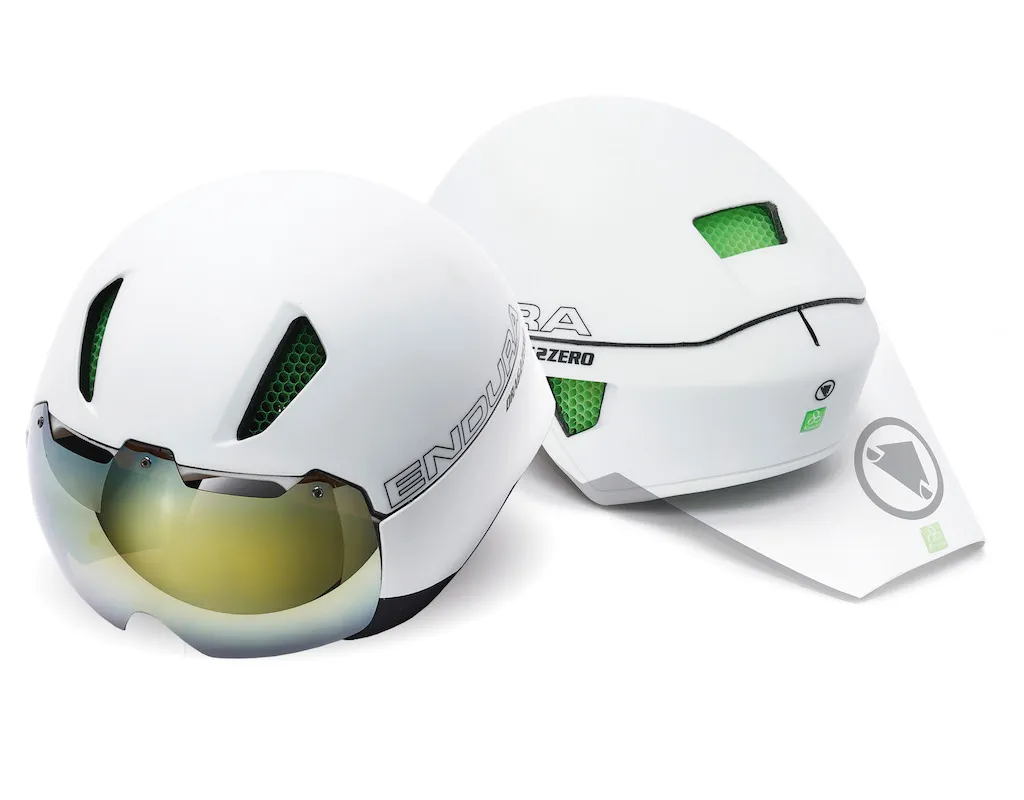
- Price: £399.99
- Pros: Versatile, great visor, solid protection
- Cons: Price
The rise of aero road helmets has seen TT helmets nudged to the tri margins since 2012.
Endura counteract this by providing the 2-in-1 Aeroswitch, which has a removable tail section so it can be used as both a TT and aero road helmet.
A full-scale R&D process with acclaimed aerodynamicist Simon Smart suggests the drag testing has been exhaustive (though we've done no wind-tunnel testing of our own).
Adding and removing the tail is simple, while the included visor is securely attached with magnets and provides excellent visibility. It can also be stored upside down like the Oakley.
The helmet’s core is Koroyd, a mesh-like material that’s said to offer improved impact protection over EPS foam and seems to help ventilation.
Yes, it comes at a price, but you’re getting two helmets in one.
Verdict: A versatile lid that's worth the outlay for serious athletes.
Score: 87%
Giant Rivet TT

- Price: £179.99
- Pros: Comfortable, good ventilation
- Cons: Small rear dial, heavy
The massive Taiwanese bike brand, Giant, makes some bold claims when it comes to the 424g Rivet TT, including ‘unbeatable performance for TT or triathlon’.
The Rivet’s aero profile – complete with its stubby tail – has been engineered and finessed through Computational Fluid Dynamics, the result being a helmet that’s said to be effective in real-world conditions.
Compared to the longer tailed offerings on the facing page, it definitely favours riders with a tendency to move their head, but loses aero points when in the optimum aero position.
The soft and flexible ear covers, along with the Cinch Pro fit retention system, aid a swift T1 while offering a comfortable fit.
The rear dial is smaller than other similar retention systems, but still allows easy adjustment on the fly.
Impressive ventilation is provided by four ports at the fore and channels that run through the helmet, which encourage airflow over the head and out through the larger exit port at the rear.
Verdict: Good comfort and ventilation, but not the most aero.
Score: 78%
How we tested the aero road helmets
We’re proud to say that we’re one of the only publications worldwide to regularly test our aero helmets in the wind tunnel.
The reason is that nearly every brand claims to produce the world’s fastest helmet, but still refuse to release the raw tunnel data from their own tests.
As our wind-tunnel results show, some helmets only perform at certain angles and speeds, so, while a helmet may technically be the fastest at a 20° yaw and riding at 55km/h, that doesn’t mean it performs across a range of wind directions and riding speeds.
Given that the vast majority of a 180km Ironman bike leg is spent riding below 10° yaw (98% at IM Arizona, 72% at Kona, for example), the 0° and 5° angles especially were the key focuses for us.
In addition to our Boardman wind-tunnel tests from 2019, we aero-tested the Kask Utopia, Smith Optics Trace and Spiuk Profit Aero at the Silverstone Sports Engineering Hub under the watch of aero expert Stephen Roche, AKA The Bike Tailor, in 2020.

We tested each at yaw angles of 0, 5 and 10°, and at speeds of 35km/hr and 45km/hr on a triathlon bike with the mannequin for added reliability.
There are also some helmets reviewed below that we haven't been able to test in the wind tunnel, and we've made clear which ones these are.
A key aspect in our testing criteria is ventilation. An aero road helmet should also provide better ventilation than a TT lid in summer racing and, as our year-round testing has proven, some protection from those beastly easterly winds in the winter.
Other key factors are the effectiveness of the retention system for comfort and fit; the ability of the buckle to be unclipped (especially with cold post-swim fingers); and the helmet’s often-overlooked modus operandi, safety.
All of the helmets here have passed the relevant European bike helmet safety tests, but also look out for added safety features such as the MIPS system.
What is an aero road helmet?
While the weight of an aero road helmet is typically higher than a standard road helmet, our wind-tunnel tests at the Silverstone Sports Engineering Hub in late 2020 and at the Boardman Performance Centre in 2019 have shown an aero road helmet can be 3:22mins faster than a vented lid over a 180km Ironman bike leg, a healthy saving for those vying for age-group honours.
Much of this, of course, depends on an athlete’s ability to keep their head in the same aero position, but the drag penalties of moving one’s head aren’t as high on an aero lid as when riding in a TT helmet.
Aero road helmets will generally have had more development in the wind tunnel than standard lids to ensure they slip through the air more smoothly, so you may see less ventilation on offer.
They're also different to out-and-out triathlon or TT helmets, which often have a teardrop shape and a tail at the rear.
These are typically more aerodynamic, but they do come with a weight penalty, offer less ventilation and can suffer on windy days.
